 It was founded by the Public, Scientific and cultural foundation
It was founded by the Public, Scientific and cultural foundation  Within the framework of its versatile social and cultural contribution, The Photos Photiades Group founded in 1994,
Within the framework of its versatile social and cultural contribution, The Photos Photiades Group founded in 1994,  The Museum's collection includes about 2500 exhibits. The majority of the collection is made of stuffed mammals, birds, fish, reptiles and insects as well as rocks, minerals, semiprecious stones, shells, fossils etc.
The Museum's collection includes about 2500 exhibits. The majority of the collection is made of stuffed mammals, birds, fish, reptiles and insects as well as rocks, minerals, semiprecious stones, shells, fossils etc.

 The Troodos Mountain Range was formed some 90 million years ago, 8000 metres below the sea level. These Mountains are exclusively made of ophiolithic stones, abundant in asbestos, chromium, copper-bearing iron pyrite deposits as well as interesting concentrations of gold and silver. This Range is a fragment of oceanic crust and the upper mantle of the earth which was detached from its initial position and gradually uplifted to its present one, because of the descend of the African lithospheric plate under the Eurasian plate. The uplift of Troodos resulted in the reversal of its stratigraphy. When going up towards Troodos, from a stratigraphic point of view, one descends from the bottom of an older ocean into the depths of the earth, until the upper mantle zone.
The Troodos Mountain Range was formed some 90 million years ago, 8000 metres below the sea level. These Mountains are exclusively made of ophiolithic stones, abundant in asbestos, chromium, copper-bearing iron pyrite deposits as well as interesting concentrations of gold and silver. This Range is a fragment of oceanic crust and the upper mantle of the earth which was detached from its initial position and gradually uplifted to its present one, because of the descend of the African lithospheric plate under the Eurasian plate. The uplift of Troodos resulted in the reversal of its stratigraphy. When going up towards Troodos, from a stratigraphic point of view, one descends from the bottom of an older ocean into the depths of the earth, until the upper mantle zone.
 The Pentadactylos Range, the older of the two mountain massifs, was formed at the time of the Alpine orogenesis (130-220 million years ago). It consists of Permian, Carboniferous and Cretaceous limestone interrupted by basaltic layers. On the lower slopes one comes across Miocene marl, sandstone and conglomerates.
The Pentadactylos Range, the older of the two mountain massifs, was formed at the time of the Alpine orogenesis (130-220 million years ago). It consists of Permian, Carboniferous and Cretaceous limestone interrupted by basaltic layers. On the lower slopes one comes across Miocene marl, sandstone and conglomerates.
 The Central Plain (Mesaoria), which until about 120 thousand years ago was a shallow sea, is formed chiefly of clay, marls and testaceous limestone dated from 0,5 million to 5 million years, while in the areas around Troodos we frequently come across chalk, limestone and gypsum. In some places of Mesaoria, especially in the region close to Nicosia, we come across fossilised shells and other marine life varieties.
The Central Plain (Mesaoria), which until about 120 thousand years ago was a shallow sea, is formed chiefly of clay, marls and testaceous limestone dated from 0,5 million to 5 million years, while in the areas around Troodos we frequently come across chalk, limestone and gypsum. In some places of Mesaoria, especially in the region close to Nicosia, we come across fossilised shells and other marine life varieties.
 We are now in the second hall. Here, the bottom of the Mediterranean Sea with many of the species found there, such as shells, ostracea, fish etc., is represented.
We are now in the second hall. Here, the bottom of the Mediterranean Sea with many of the species found there, such as shells, ostracea, fish etc., is represented.
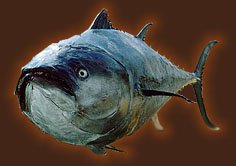 However, the immense industrial and tourist evolution of the 20th century and the continuous pollution of rivers and seas in combination with the systematic fishing of great quantities of fish annually, have caused an incalculable damage in the Mediterranean ecosystem.
However, the immense industrial and tourist evolution of the 20th century and the continuous pollution of rivers and seas in combination with the systematic fishing of great quantities of fish annually, have caused an incalculable damage in the Mediterranean ecosystem.
 Palaeontology is the science that deals with the organic world of past geological eras. This science studies fossilised plants and animals that are preserved in rocks. The term
Palaeontology is the science that deals with the organic world of past geological eras. This science studies fossilised plants and animals that are preserved in rocks. The term  The fossils of Cyprus originate mainly from marine species, since the majority of sedimentary rock formations are of marine origin. On earth rock formations and mainly in caves and natural grottos are found fossils of pigmy hippopotami, elephants and other mammals. Fossilised pine cones and pine tree branches that have been found in certain areas in the pleocene marls are still of unknown origin as far as their species is concerned. These fossils are witnesses of the earliest presence of pine trees in Cyprus.
The fossils of Cyprus originate mainly from marine species, since the majority of sedimentary rock formations are of marine origin. On earth rock formations and mainly in caves and natural grottos are found fossils of pigmy hippopotami, elephants and other mammals. Fossilised pine cones and pine tree branches that have been found in certain areas in the pleocene marls are still of unknown origin as far as their species is concerned. These fossils are witnesses of the earliest presence of pine trees in Cyprus.
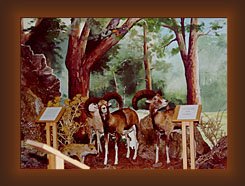 We now enter the third hall, where the visitor can find two of the most important habitats in Cyprus, in the representations of parts of the Paphos Forest and the Larnaka Salt Lake.
We now enter the third hall, where the visitor can find two of the most important habitats in Cyprus, in the representations of parts of the Paphos Forest and the Larnaka Salt Lake.
 The Paphos Forest, the biggest and richest forest in Cyprus, which covers an area of about 620 square kilometers, is the only area in the island where the mouflon (Ovis gmelini ophion), a kind of a wild sheep, can be found. Since 1978 it is considered a species in danger of extinction and is protected by Cyprus legislation. While in the Cedar Valley grows the beautiful Cyprus cedar (Cedrus libanii-brevifolia).
The Paphos Forest, the biggest and richest forest in Cyprus, which covers an area of about 620 square kilometers, is the only area in the island where the mouflon (Ovis gmelini ophion), a kind of a wild sheep, can be found. Since 1978 it is considered a species in danger of extinction and is protected by Cyprus legislation. While in the Cedar Valley grows the beautiful Cyprus cedar (Cedrus libanii-brevifolia).
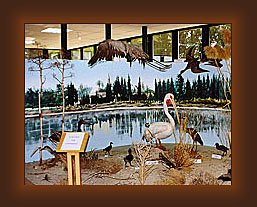 The Larnaka Salt Lake is one of the most important habitats in Europe for water fowl. Thousands of flamingos, wild ducks and other water or shore fowl find refuge in winter here or rest and gather food for their migratory journeys.
The Larnaka Salt Lake is one of the most important habitats in Europe for water fowl. Thousands of flamingos, wild ducks and other water or shore fowl find refuge in winter here or rest and gather food for their migratory journeys.
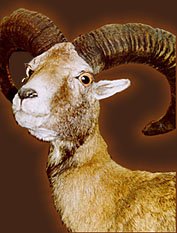 We now come to the fourth hall, which is divided in different sections where the visitor can study the various species of the Cyprus Fauna, their anatomy and habits, their feeding requirements etc.
We now come to the fourth hall, which is divided in different sections where the visitor can study the various species of the Cyprus Fauna, their anatomy and habits, their feeding requirements etc.
 There are glass showcases with insects, butterflies, fowl and characteristic nests of fowl and insects, animal skulls and jaws etc. The collection has also been enriched with a number of mammals from N. America, which will be the nucleus of the Museum's foreign exhibits department.
There are glass showcases with insects, butterflies, fowl and characteristic nests of fowl and insects, animal skulls and jaws etc. The collection has also been enriched with a number of mammals from N. America, which will be the nucleus of the Museum's foreign exhibits department.
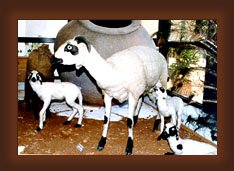 In this section we can see animals that could be seen in the past in a traditional Cypriot farmyard. Such animals are donkeys, sheep, goats, cows, rabbits, etc. These aimas have been raised by Cypriots for centuries and they provided people with provisions which were indispensable for their survival, such as meat, milk, eggs, skins and wool.
In this section we can see animals that could be seen in the past in a traditional Cypriot farmyard. Such animals are donkeys, sheep, goats, cows, rabbits, etc. These aimas have been raised by Cypriots for centuries and they provided people with provisions which were indispensable for their survival, such as meat, milk, eggs, skins and wool.
 These prehistoric people, who knew the art of navigation, had traversed the sea and came here, bringing with them their household and cattle. It is known that animals, such as goats and sheep, had already been domesticated in the nearby region of the Middle East, during the Mesolithic Era (10,000 - 12,000 B.C.). This Era is the beginning of colonization of the Meditteranean Sea by man.
These prehistoric people, who knew the art of navigation, had traversed the sea and came here, bringing with them their household and cattle. It is known that animals, such as goats and sheep, had already been domesticated in the nearby region of the Middle East, during the Mesolithic Era (10,000 - 12,000 B.C.). This Era is the beginning of colonization of the Meditteranean Sea by man.
 We now come to the Insects Department, where you can see collections of insects found in Cyprus.
We now come to the Insects Department, where you can see collections of insects found in Cyprus.










 CY +357-96-38-39-40
CY +357-96-38-39-40
 RU +7 965 2 38-39-40
RU +7 965 2 38-39-40
 UA +38-073-738-39-40
UA +38-073-738-39-40
 WhatsApp
WhatsApp
 Messenger
Messenger
 Сообщение
Сообщение
 info@24glo.com
info@24glo.com
Главная
| ▲
| Контакты
Copyright © 24GLO LTD ® 2004-2025. All rights reserved.